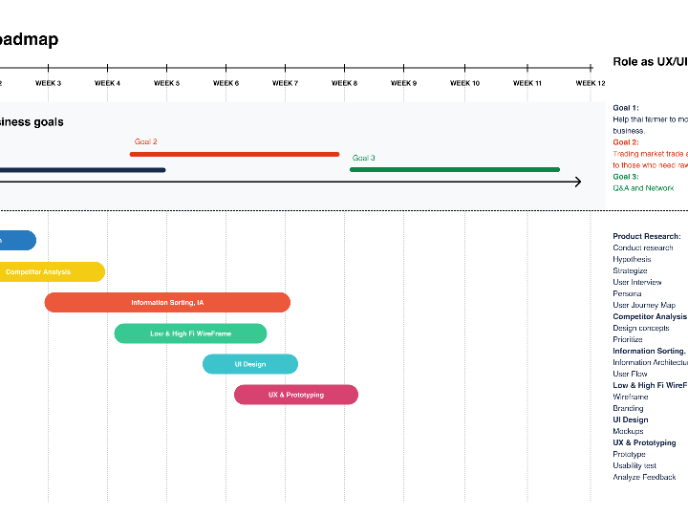Product Management
Product management guides the planning, development of a product by aligning user needs with business goals. The success of a product largely depends on this.
TL;DR
- Oversees product vision, strategy, and execution.
- Balances user needs with business objectives.
- Aligns cross-functional teams and stakeholders.
- Ensures products deliver lasting value.
Definition
Product management is the practice of defining, developing, and overseeing products by aligning user needs, business strategy, and technical execution, ensuring successful outcomes across the product lifecycle.
Detailed Overview
Product management sits at the intersection of design, engineering, and business. Product managers (PMs) act as the connective tissue, ensuring that products are not only usable but also feasible and valuable. Their role includes defining vision, creating strategies, prioritizing initiatives, and guiding execution.
A frequent question is what exactly PMs do day-to-day. Their responsibilities range from conducting user research and analyzing data to writing product requirements, managing roadmaps, and aligning stakeholders. While they may not design or code, PMs ensure that these efforts are coordinated and aligned with broader goals.
Another common query is how product management differs from project management. Project management focuses on delivering tasks within scope, time, and budget. Product management, by contrast, emphasizes long-term outcomes, ensuring the product solves meaningful problems and supports strategic objectives. Both roles are critical but serve different purposes.
Teams often ask about the skills needed for product management. Strong PMs combine analytical ability with communication, empathy, and strategic thinking. They must understand users deeply, translate insights into priorities, and communicate vision clearly to engineers, designers, and executives.
Another frequent topic is prioritization. With limited resources, PMs must decide what to build, when, and why. They use frameworks and data to make trade-offs, balancing user needs with business objectives. These decisions often involve difficult conversations, requiring both diplomacy and conviction.
Finally, product management is not static. The role evolves as the product matures. In early stages, PMs focus on discovery and achieving product-market fit. In later stages, emphasis shifts to scaling, optimization, and differentiation. Throughout, PMs keep the vision alive, ensuring the product continues to deliver value.
Learn more about this in the Introduction to Product Management Course.
A PM defines the vision, strategy, and priorities for a product. They guide execution by aligning teams and ensuring that user needs and business goals are met.
While they don’t design or build directly, their influence ensures cohesion across disciplines.
Project management ensures tasks are completed within scope and deadlines. Product management focuses on long-term outcomes, ensuring that what is built solves real problems and supports strategic goals.
Both are complementary but address different aspects of execution.
Strong PMs balance analysis, strategy, and communication. They need empathy for users, the ability to analyze data, and the skill to persuade and align stakeholders.
This blend allows them to bridge technical, design, and business perspectives effectively.
PMs use prioritization frameworks and data to weigh trade-offs. They evaluate impact, feasibility, and alignment with vision. Prioritization ensures that limited resources go to initiatives with the greatest potential value.
This structured approach avoids building features for short-term appeal while missing long-term goals.
In early stages, product management emphasizes discovery and validation. As the product matures, PMs focus on scaling, optimization, and sustaining growth. Later, they may oversee innovation or repositioning.
This adaptability ensures the product remains relevant and competitive throughout its lifecycle.
Recommended resources
Courses

Introduction to Product Management

Product Management for Designers

Accessibility Foundations
Lessons

Intro to Product Discovery

Core Responsibilities of a Product Manager

Cross-Functional Collaboration
Exercises
Briefs

Build a Product Roadmap

Develop a Freemium vs. Paid Model Strategy

Write Technical Feature Specifications
Tutorials

ChatGPT for Product Managers: 10 Prompts That Will Save You Hours

How To Write User Stories That Actually Get Built

Communicating Across Teams
Projects

Build a Product Roadmap












